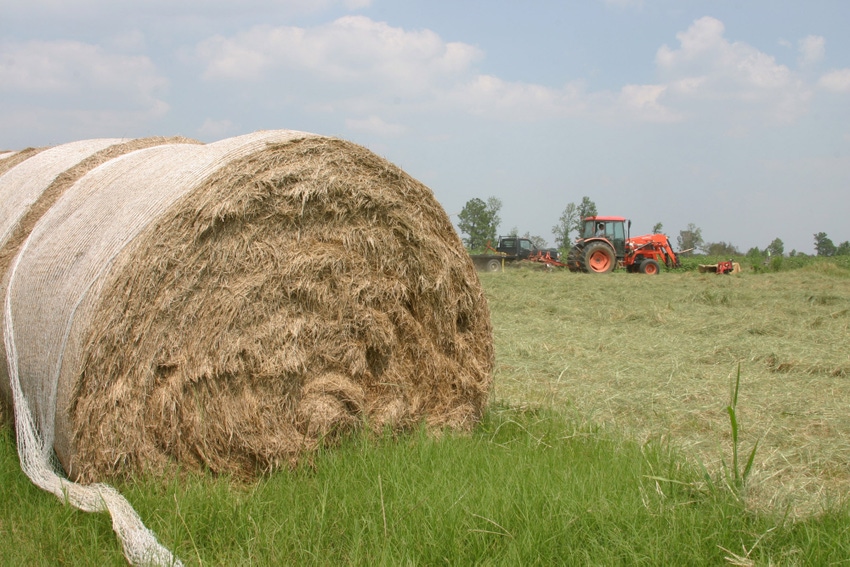May 16, 2014

Now is the optimal time for Kentucky forage producers to cut hay to ensure they get good quality and yield.
“The stage of maturity at which the hay is cut is the biggest factor that affects quality,” said Tom Keene, UK hay marketing specialist with the University of Kentucky College of Agriculture, Food and Environment.
Many Kentucky producers went into the winter of 2013-2014 thinking they had enough good quality hay to sustain their livestock. Before the end of winter, some found that they needed more or that their hay quality was not as good as they had previously thought.
For grasses, Keene said producers should cut the plant when it’s in the late boot stage. For legumes, producers should harvest when the plant is at the late bud or early flowering stage. A good rule of thumb for legume producers is to watch for flowers in the field. As flowers begin to appear, it’s time or to harvest for good quality forage. Waiting could result in poor quality hay. While the harsh winter and a colder-than-average early spring slowed the development of some grasses and legumes, most are at or nearing maturity now.
“The quality is going to go down every day producers wait to make hay from this point on,” Keene said.
Since hay needs adequate time to dry before it can be baled or rolled, growers need four or five consecutive days of dry weather to make hay.
Once hay is made, producers can ensure good quality by having it tested through the Kentucky Department of Agriculture.
About the Author(s)
You May Also Like




